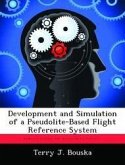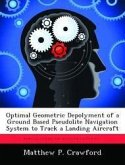Current flight reference systems rely heavily on the Global Positioning System (GPS), causing susceptibility to GPS jamming. Additionally, an increasing number of tests involve jamming the GPS signal. A need exists to develop a system capable of GPS-level accuracy during these outages. One promising solution is a ground-based pseudolite system capable of delivering sub-centimeter level accuracy, yet operating at non-GPS frequencies. This thesis attempts to determine the unknown errors in the Locata system, one such pseudolite-based system, to achieve the accuracy required. The development of a measurement simulation tool along with a Kalman filter algorithm provides confimmation of filter performance as well as the ability to process real data measurements and evaluate simulated versus real data comparatively. The simulation tool creates various types of measurements with induced noise, tropospheric delays, pseudolite position errors, and tropospheric scale-factor errors. In turn, the Kalman filter resolves these errors, along with position, velocity, and acceleration for both simulated and real data measurements, enabling error analysis to pinpoint both expected and unexpected error sources. Simulated results con rmed the ability to render centimeter level solutions in a noisy environment, proper pseudolite position error estimation, and suitable tropospheric scale-factor estimation. Additionally, the simulation demonstrated the inability to conduct simultaneous estimation of both the pseudolite position errors and the tropospheric scale-factor. Real data results indicate the algorithm renders a highly accurate (6cm) position solution after applying the low elevation tropospheric delay model substantiated in this thesis. Furthermore, the ability to resolve the pseudolite position errors and tropospheric scale-factor provide mitigation of previously unmodeled errors, and highlight the fact additional errors exist, which remain undetermined.
Hinweis: Dieser Artikel kann nur an eine deutsche Lieferadresse ausgeliefert werden.
Hinweis: Dieser Artikel kann nur an eine deutsche Lieferadresse ausgeliefert werden.








